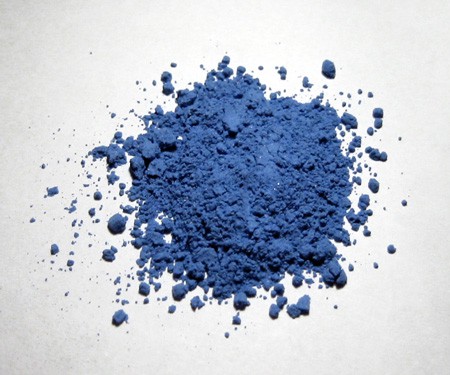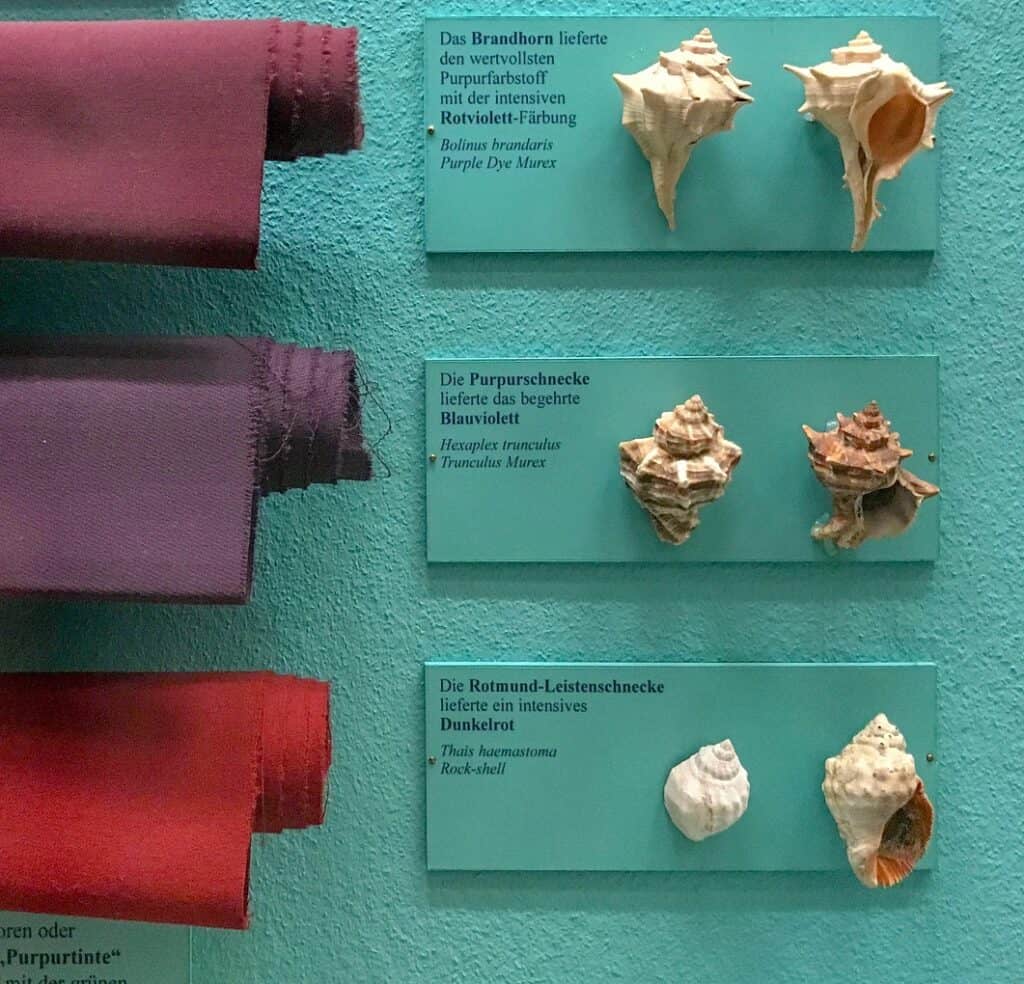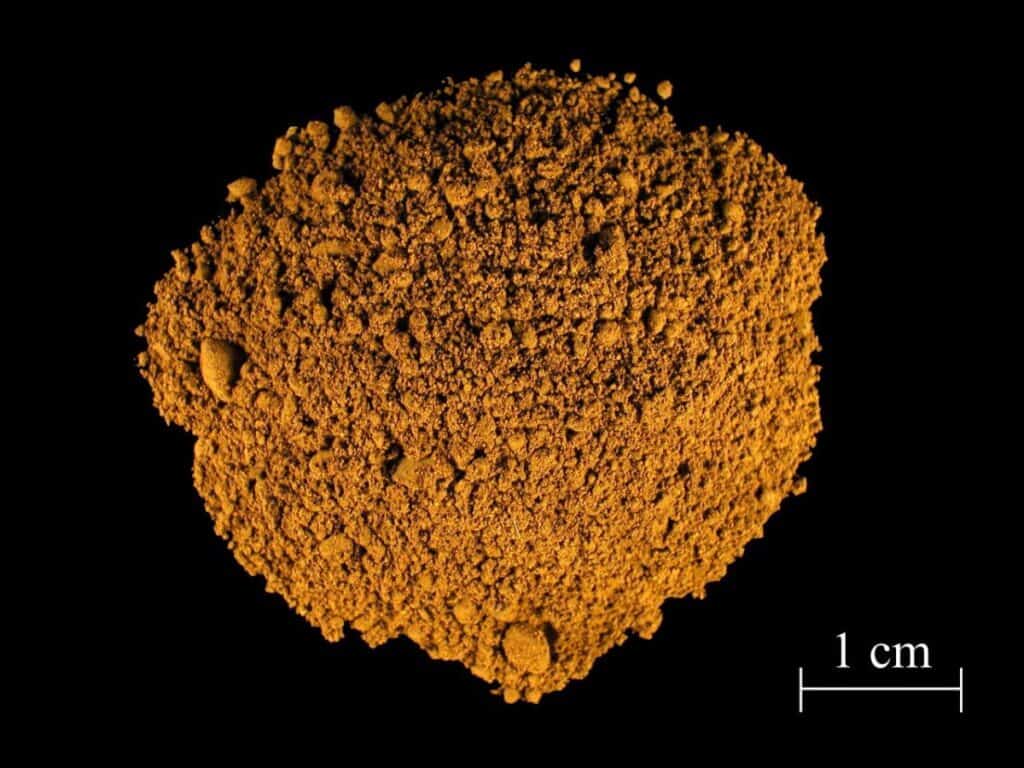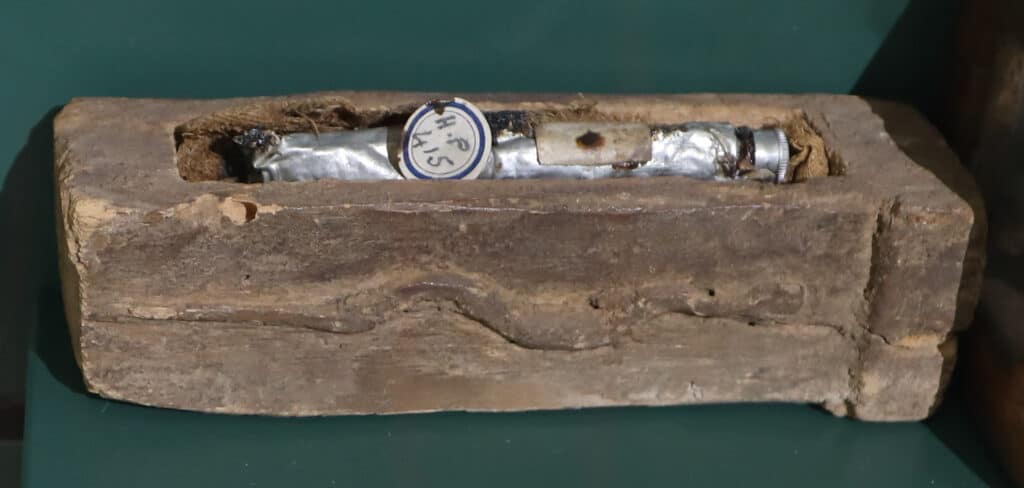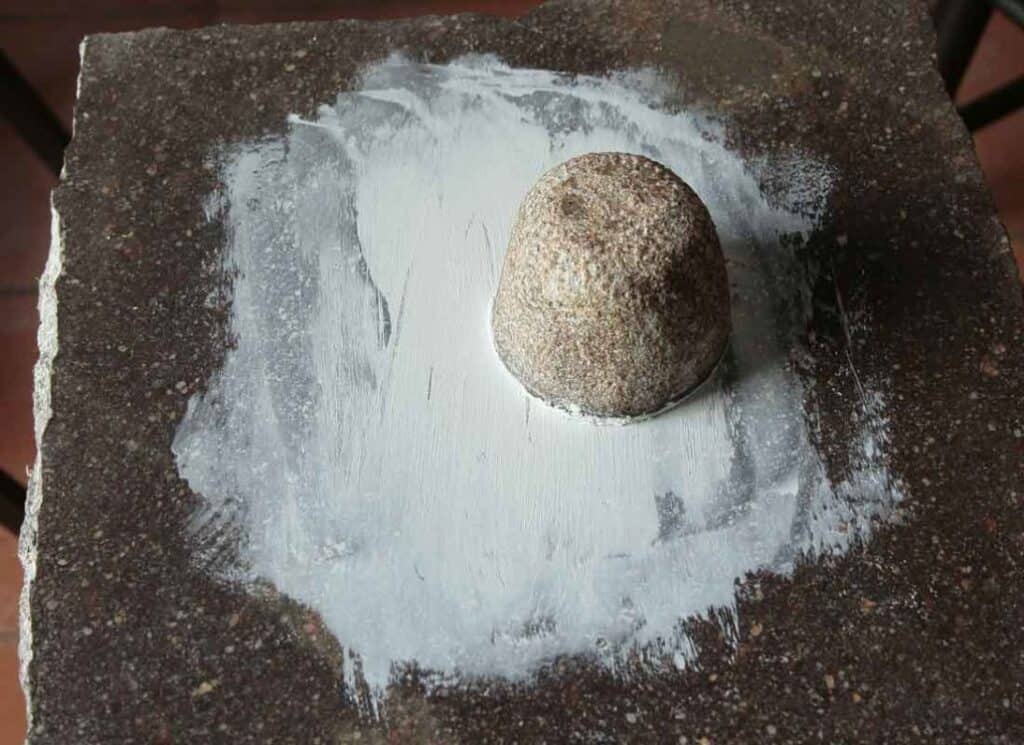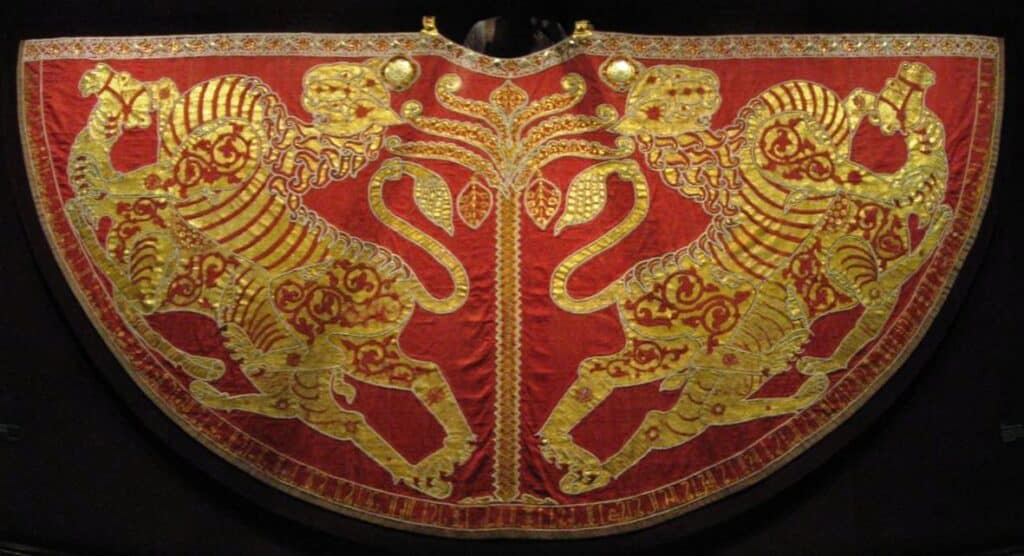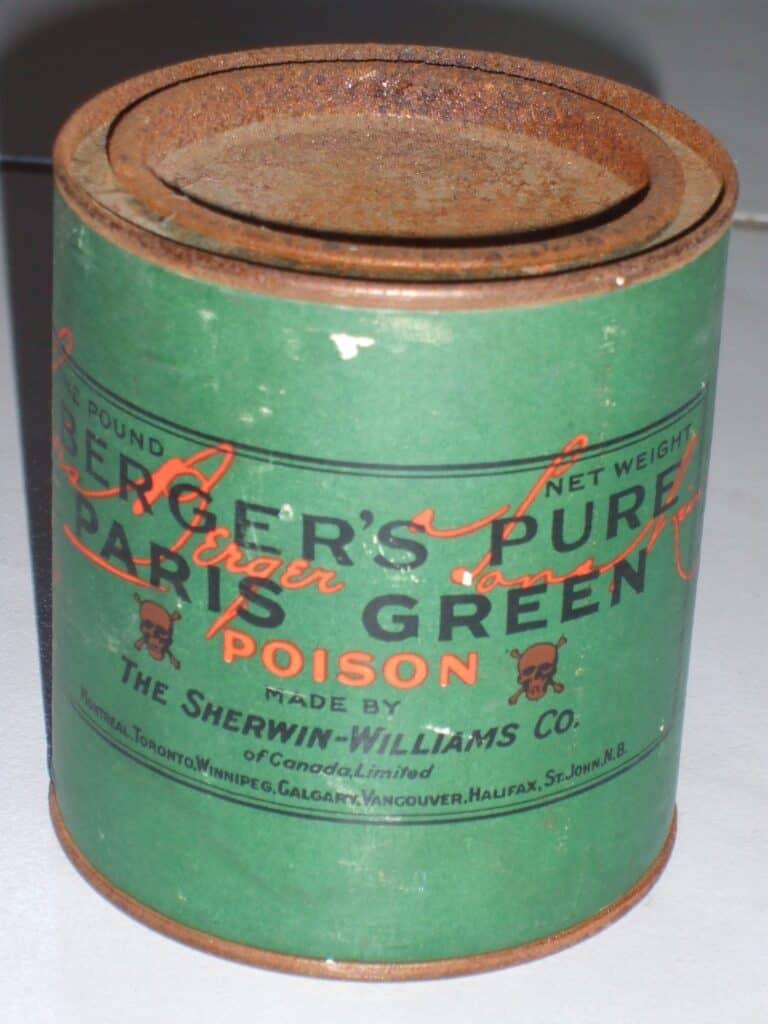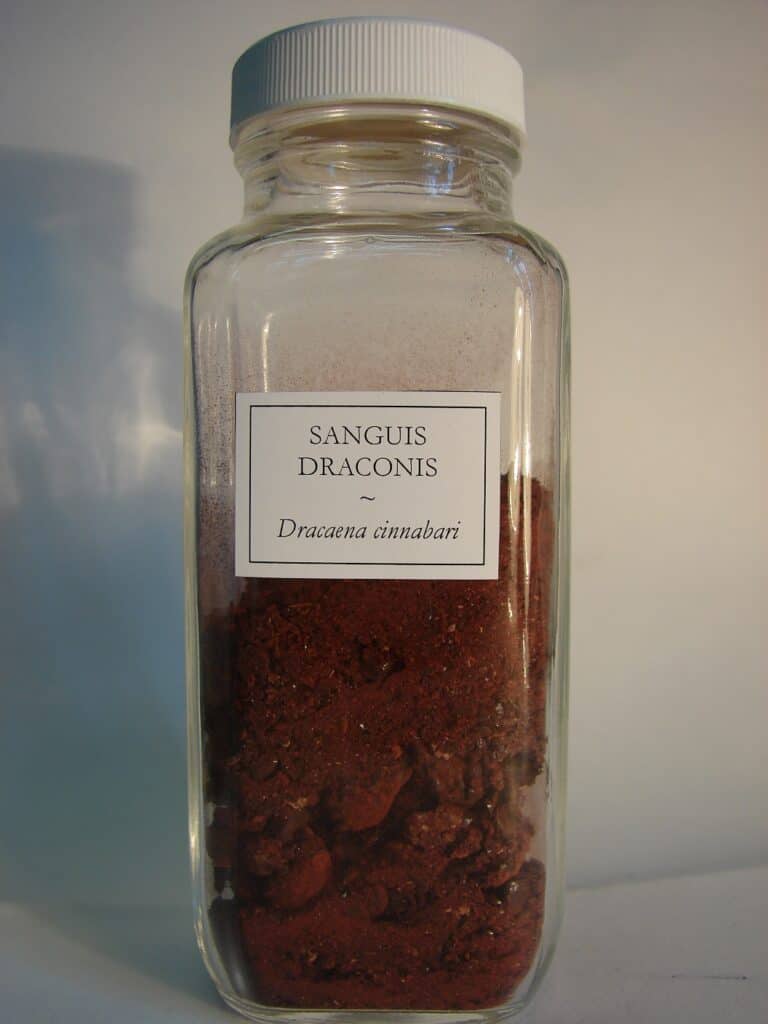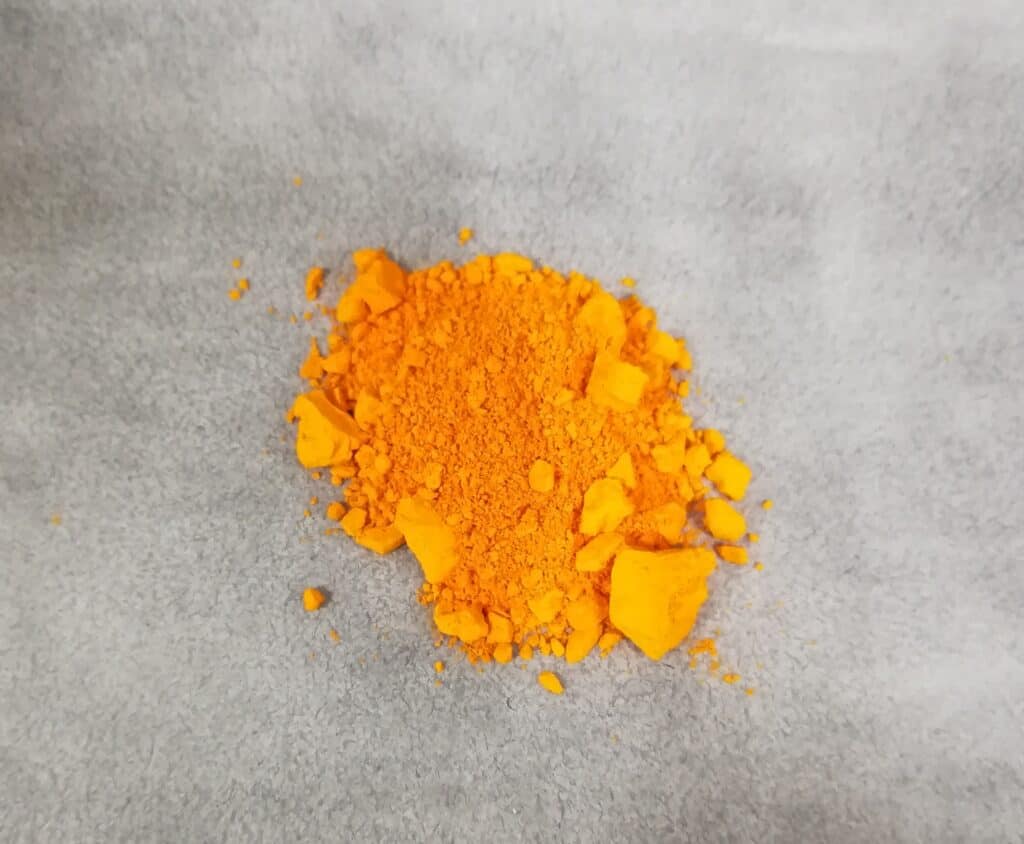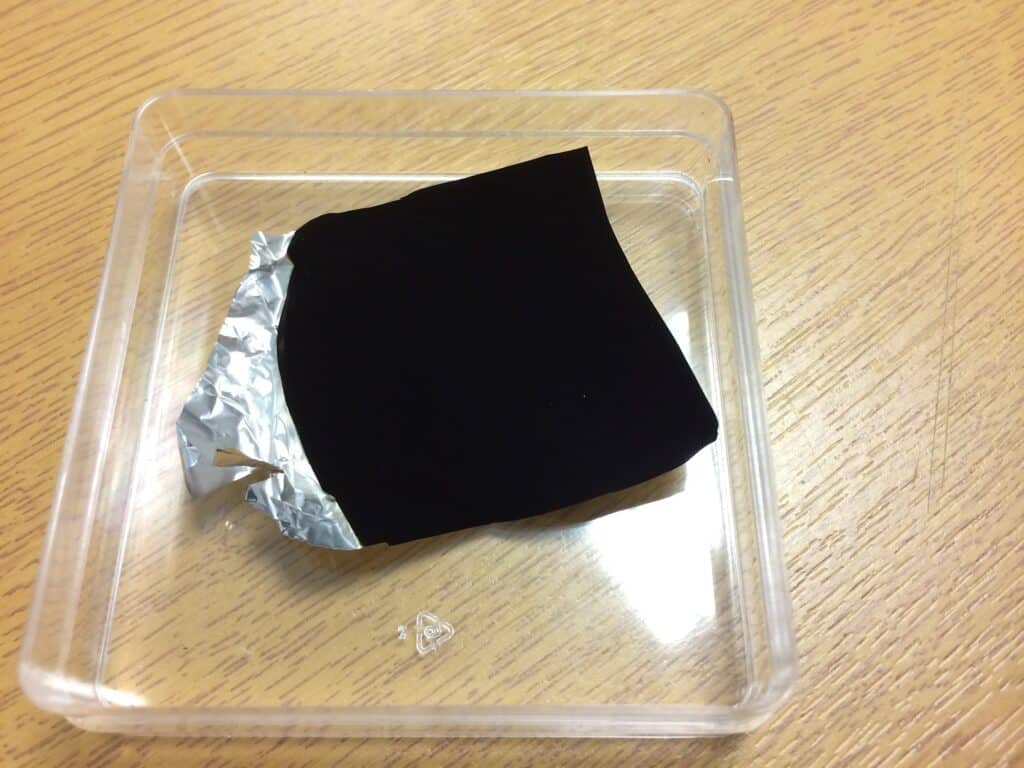Humans have been producing colors/pigments probably for as long as our species has been around. Ancient cave paintings feature vivid colors that were made with colored clays and other minerals. Of course, some colors are rarer than others. Their rarity could be because the materials needed to produce the pigments are expensive or the pigment ended up being toxic.
This list contains some of the rarest pigments ever in history. Some of them are still used today, while others have been lost to time.
10. Ultramarine
What’s It Made From: Lapis Lazuli
Color Family: Blue

photo source: Wikimedia Commons
Artists were so in love with Ultramarine because of how beautiful and rich the color is, that they asked chemists to find a synthetic alternative.
True Ultramarine was too costly to use often, but some very famous Renaissance paintings, like Vermeer’s Girl with a Pearl Earring, feature the pigment.
In 1824, he Societé d’Encouragement offered a prize of six thousand francs to anyone who could produce a synthetic Ultramarine that would be more cost effective.
Although Jean Baptiste Guimet was the first to produce a synthetic Ultramarine in 1826, he kept his process a secret. The prize money was not claimed until 1828, when Christian Gmelin submitted his synthetic Ultramarine process.
Did you know
Ultramarine was so expensive during the Renaissance that an ounce of the pigment cost more than an ounce of gold.
9. Tyrian Purple
What’s It Made From: Sea Snails
Color Family: Purple

photo source: Wikimedia Commons
Most people know that purple used to be considered a color reserved for royalty. This is because Tyrian Purple — also called royal purple, imperial purple, imperial dye, and Phoenician red/purple — was made by crushing up tens of thousands of sea snails. The process was labor intense and expensive, so Tyrian Purple, which is a beautifully deep purple, was reserved for royalty or other high class members of society.
Tyrian Purple was first used as a fabric dye around 1200 BCE by the Phoenicians and was very popular with the Greeks and Romans. The exact methods for how to create Tyrian Purple have been lost, but British chemist William Perkin accidentally discovered how to make a similar snail-free color in 1856 while researching a cure for malaria. Perkin dubbed his color mauve.
Did you know
Tyrian Purple is named after the Phoenician port city of Tyre, where a majority of the dye was produced.
8. Quercitron
What’s It Made From: Bark of the Eastern Black Oak or Persian berries
Color Family: Yellow

photo source: cameo.mfa.org
Quercitron, which was known as Dutch Pink, is a long-forgotten natural yellow pigment. It was made from the bark of the Eastern Black Oak or crushed Persian berries.
Modern Quercitron is exclusively made from Eastern Black Oak bark.
The color produced is a greenish yellow and historically, Quercitron has been used as an artist’s pigment. Quercitron was introduced to in England in 1775 by Edward Bancroft as a substitute for weld dye, another type of yellow pigment.
Did you know
During the height of Quercitron’s popularity, the English word pink was used for yellow colors, which is why Quercitron was called Dutch Pink. It is believed that pink is derived from the German word pinkeln translated in a dictionary of 1798 meaning ‘to piss, to make water.’
7. Mummy Brown
What’s It Made From: Ground-up remains of Egyptian mummies
Color Family: Brown

photo source: Wikimedia Commons
Mummy Brown dates back to the 16th and 17th centuries when Europeans began grinding up the remains of ancient Egyptian mummies, both humans and cats, and turning it into a brown pigment. It was an incredibly popular color used by Pre-Raphaelite artists because it had good transparency. Mummy Brown was used for glazes shadows, flesh tones, and shading.
Unfortunately, demand for Mummy Brown was so high that the available supply of authentic Egyptian mummies dwindled and contemporary corpses of slaves or criminals were used to create the pigment.
As it became more important to actually preserve Egyptian mummies and more people began to see how unethical it was to use mummies to make pigment, demand for Mummy Brown declined and it is no longer produced.
Did you know
Modern pigments labeled “Mummy Brown” are made from a mixture of kaolin, quartz, goethite, and hematite.
6. Lead White
What’s It Made From: Lead Carbonate
Color Family: White

photo source: laafa.edu
Of course, we now know that lead-based paints cause lead poisoning (was known “Painter’s Colic”) and the use of Lead White is now banned in most countries.
Because Lead White is difficult to produce synthetically, many artists continued to use this white pigment until widespread bans were put in place in the 1970s.
Did you know
Lead White was used as far back as the 4th century BCE by Ancient Egyptians, Greeks, and Romans in ointments, plasters, and cosmetics.
5. Kermes
What’s It Made From: Kermes Insects
Color Family: Red

photo source: Wikimedia Commons
Kermes is an ancient red dye that is made from the dried bodies of the female Kermes insects. It is a crimson red color that was often used to produce scarlet cloth. The Kermes insects are parasites that live on the Kermes oak.
To make Kermes pigment, which is also called Carmine Red, the insects were dried and ground into a powder that was then cooked in a pot of water on low heat, producing a red liquid dye. Eventually, using Kermes to produce Carmine Red fell out of favor once the cochineal insect was discovered in the Americas.
Cochineal produces a more pigmented red than the Kermes insects, so less cochineal insects are needed.
Did you know
The female Kermes insect only produces the red pigments in her body when she is at peak adulthood while her unhatched eggs are intact.
4. Emerald Green
What’s It Made From: Copper(II)-acetoarsenite
Color Family: Green

photo source: Wikimedia Commons via Chris Goulet
Emerald Green or Paris Green was a popular deep green pigment used throughout the early 19th century. The artificial pigment is chemical compound Copper(II)-acetoarsenite that was invented by two chemists, Russ and Sattler, at the Wilhelm Dye and White Lead Company.
Like a few of the other rare colors on this list, Emerald Green is highly toxic and its use has declined once this was discovered.
However, before this Emerald Green was used in everything from artist’s paints to wallpaper and fabric dyes. For this reason, vintage green clothing should be handled carefully.
Cobalt Green, has replaced Emerald Green in most applications, but Emerald Green is still used in artist paints and as a firework colorant.
Did you know
Around the mid-19th century, farmers discovered that Emerald Green was an effective insecticide against the Colorado potato beetle, an aggressive agricultural pest.
3. Dragon’s Blood
What’s It Made From: Resin from various plants from the Croton, Dracaena, Daemonorops, Calamus rotang and Pterocarpus genus
Color Family: Red

photo source: Wikimedia Commons
Despite its cool name and ancient beliefs, Dragon’s Blood pigment does not come from the blood of dragons. It is a bright red color, but it comes from the resin of various plants/trees such as the rattan palm or Socotra dragon tree aka the dragon blood tree.
The resin from the dragon blood tree and other Dracaena species is considered “true” Dragon’s Blood, but pigments derived from other plants are still sold as Dragon’s Blood.
In addition to paint, Dragon’s Blood has been used as varnish, dye, incense, and even medicine since ancient times.
Did you know
Dragon’s Blood pigment was used to color orange-red flames above the heads of the Apostles Giotto di Bondone’s “The Pentecost,” one of seven panels depicting the life of Jesus Christ.
2. Cadmium Yellow
What’s It Made From: Cadmium Sulfide
Color Family: Yellow

photo source: Wikimedia Commons
Cadmium Yellow might be a beautiful yellow color, but it is also incredibly toxic. As its name suggests, Cadmium Yellow is derived from cadmium sulfide, a toxic heavy metal. Cadmium sulfide has a vivid yellow color, which led to it being used as a yellow paint in the early 19th century.
German chemist Friedrich Stromeyer produced Cadmium Yellows and popularized their use.
Unfortunately, even small amounts of cadmium are toxic to humans and other animals when its inhaled or ingested. Despite its danger, artists still use Cadmium Yellow and other cadmium derived pigments.
Did you know
Besides Cadmium Yellow, other cadmium pigments include orange, red, and green, which have different chemical makeups from Cadmium Yellow.
1. Vantablack
What’s It Made From: Manmade from carbon nanotubes
Color Family: Black

photo source: Wikimedia Commons
Materials coated with Vantablack absorb 99.965% of visible light. Vantablack is currently the darkest substance known to humankind.
Surrey NanoSystems has been incredibly selective over who has access to Vantablack. While Vantablack has primarily been used in practical applications in the aerospace and military sectors, its artistic use is limited to only Anish Kapoor’s studio.
This has sparked backlash in the art community as Kapoor has refused to share Vantablack with other artists, which many feel is against the spirit of art.
Did you know
The “VANTA” part of Vantablack’s name stands for Vertically Aligned Nano Tube Arrays.

